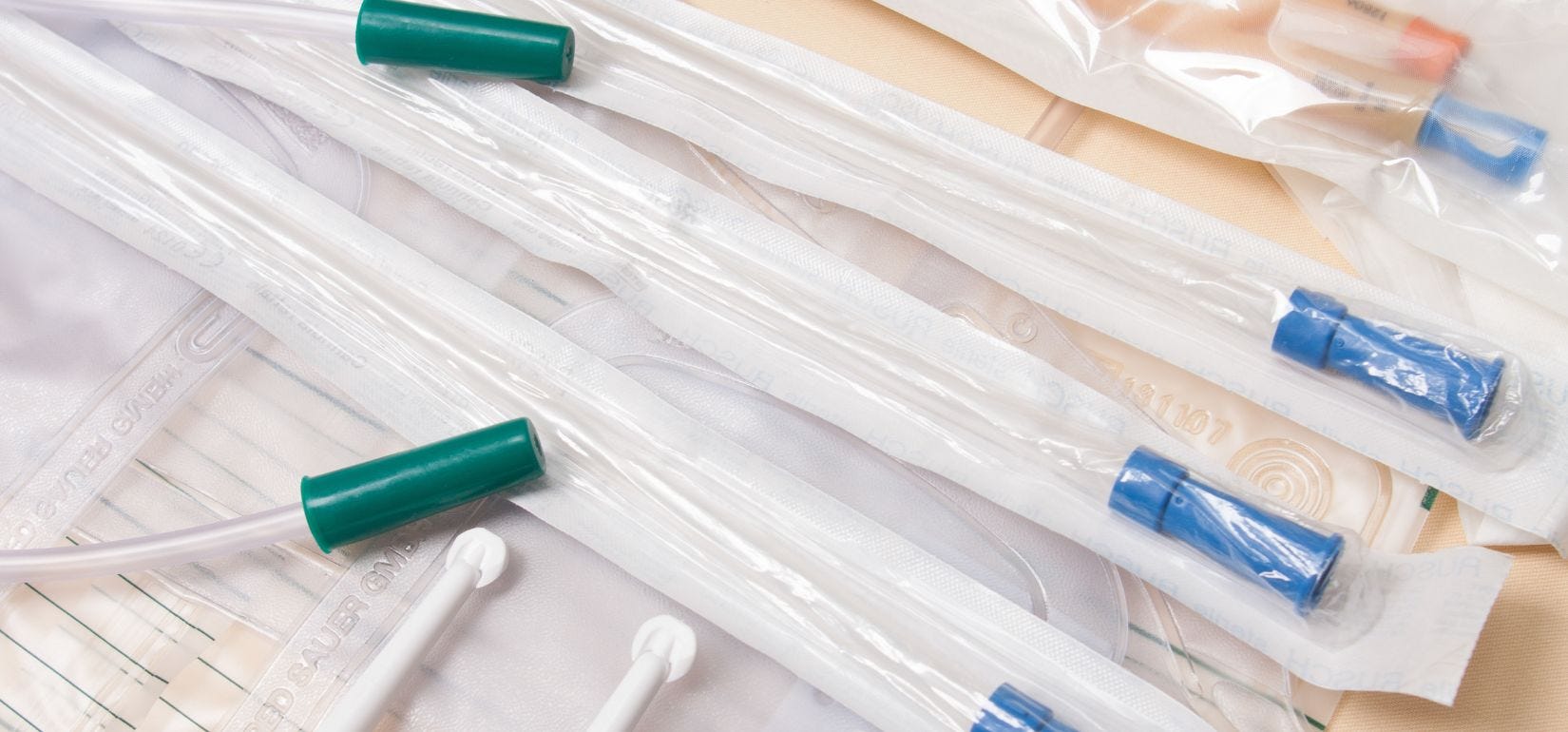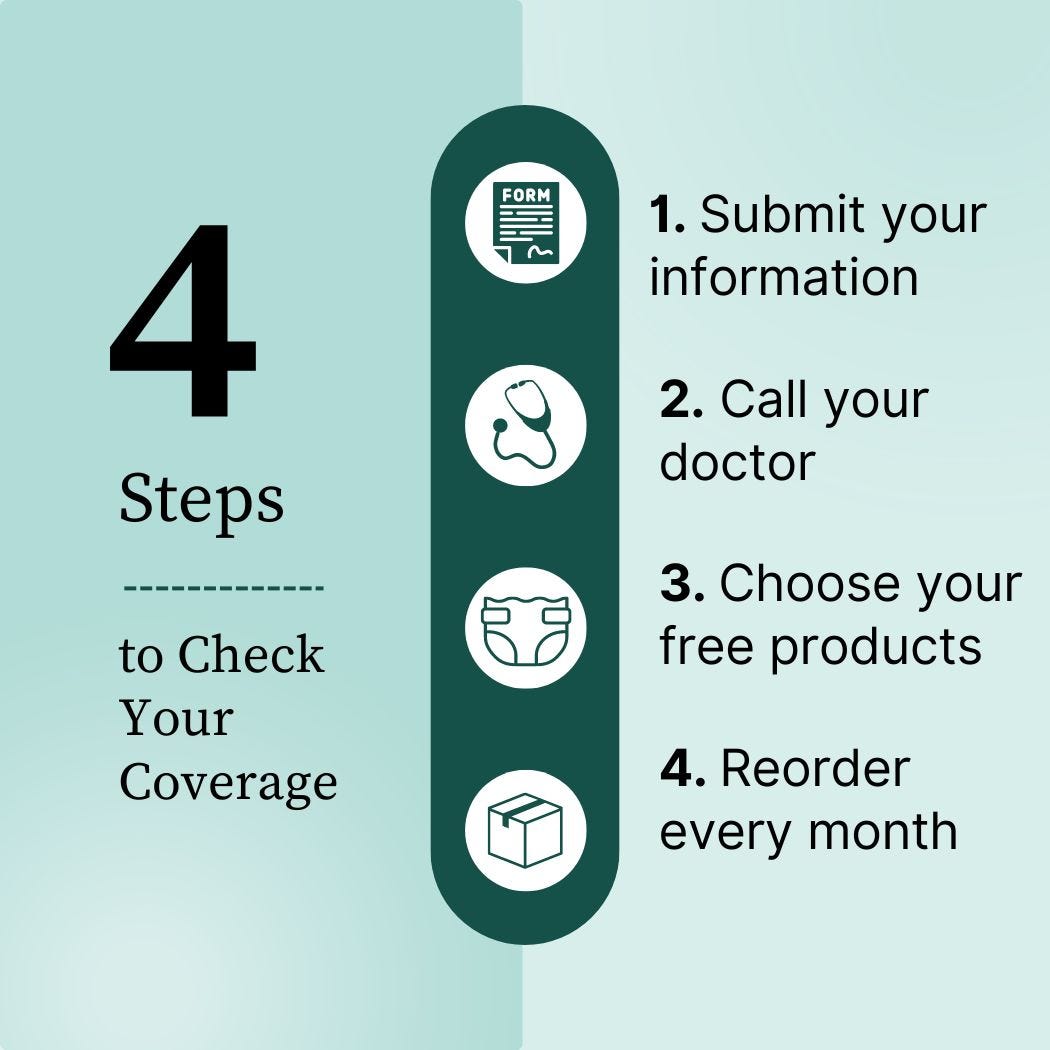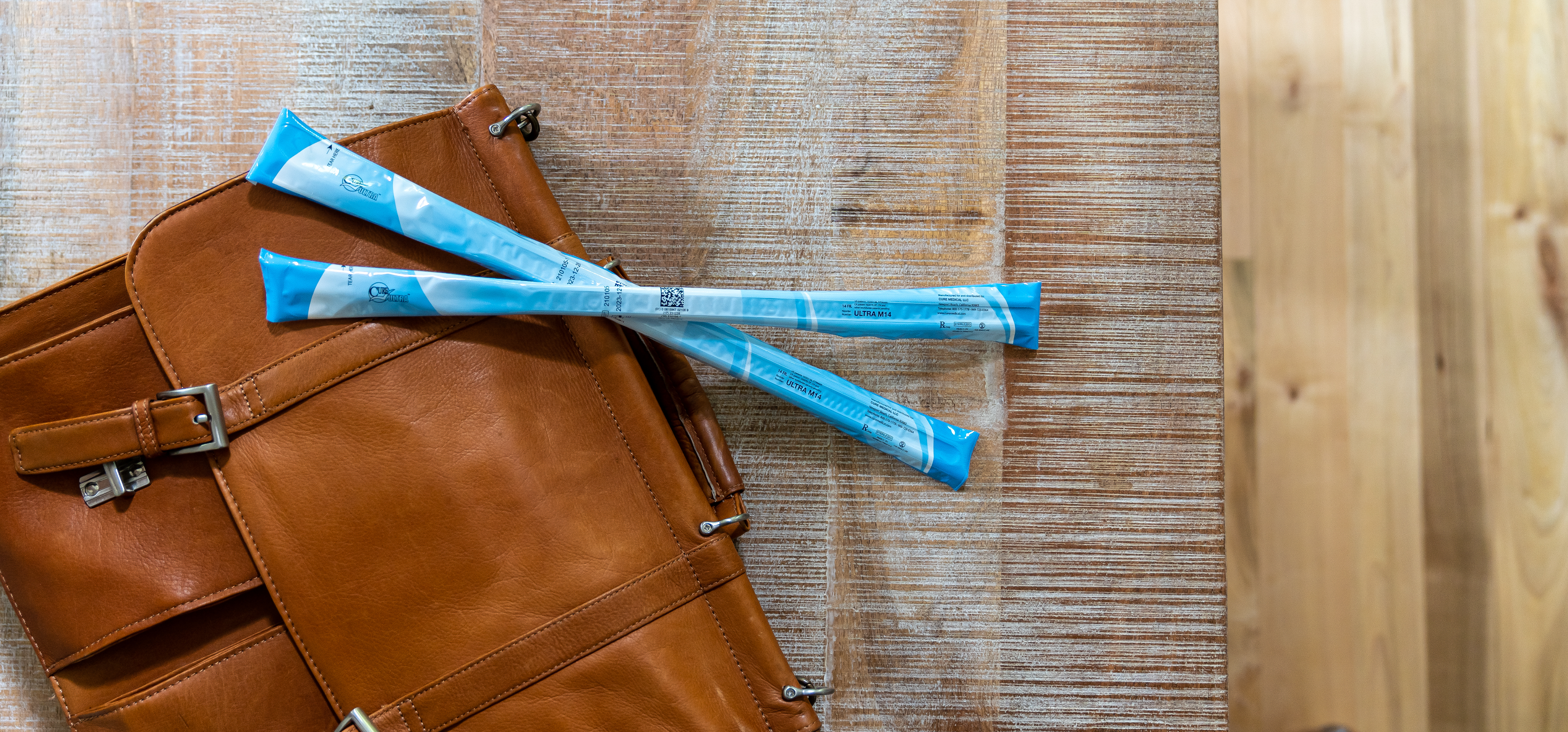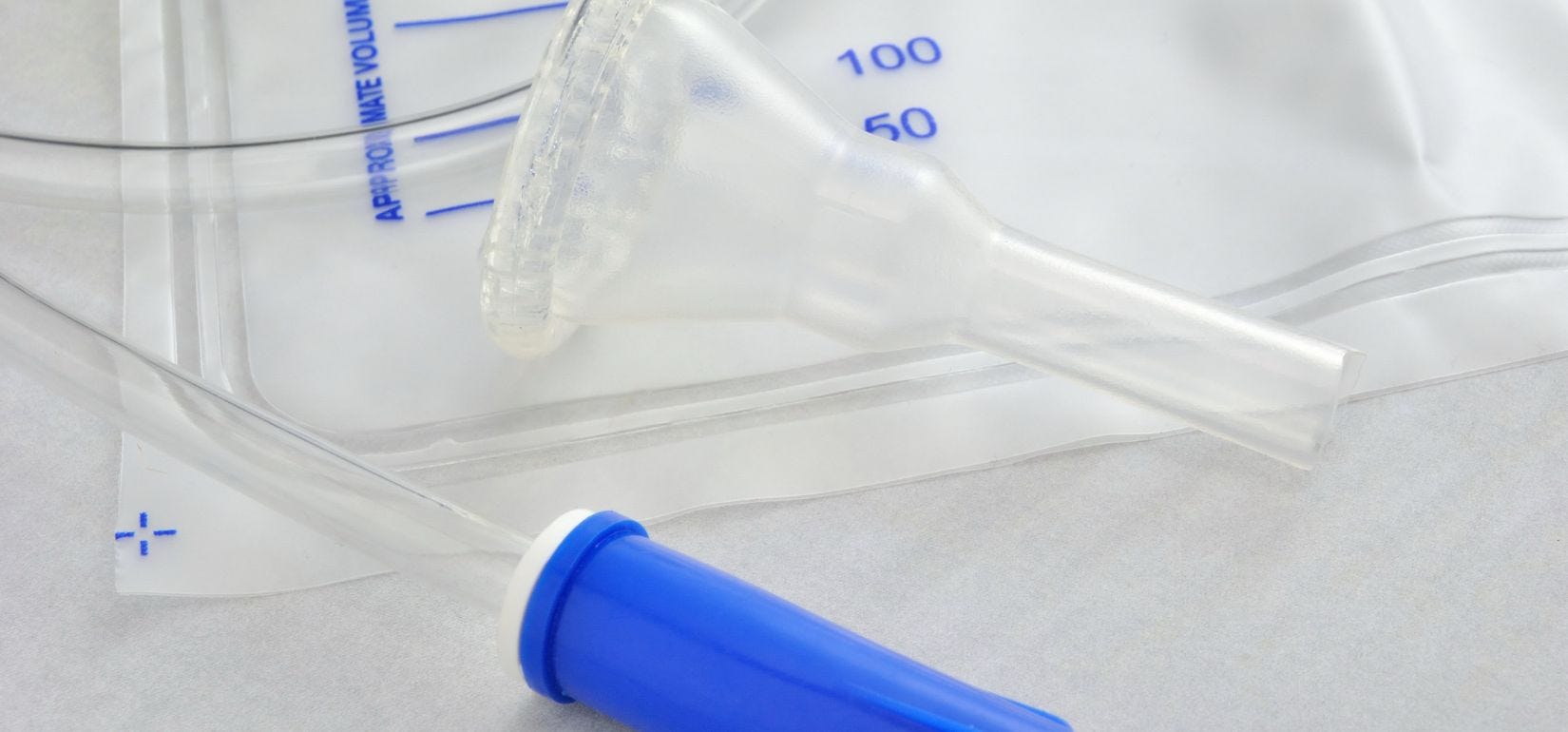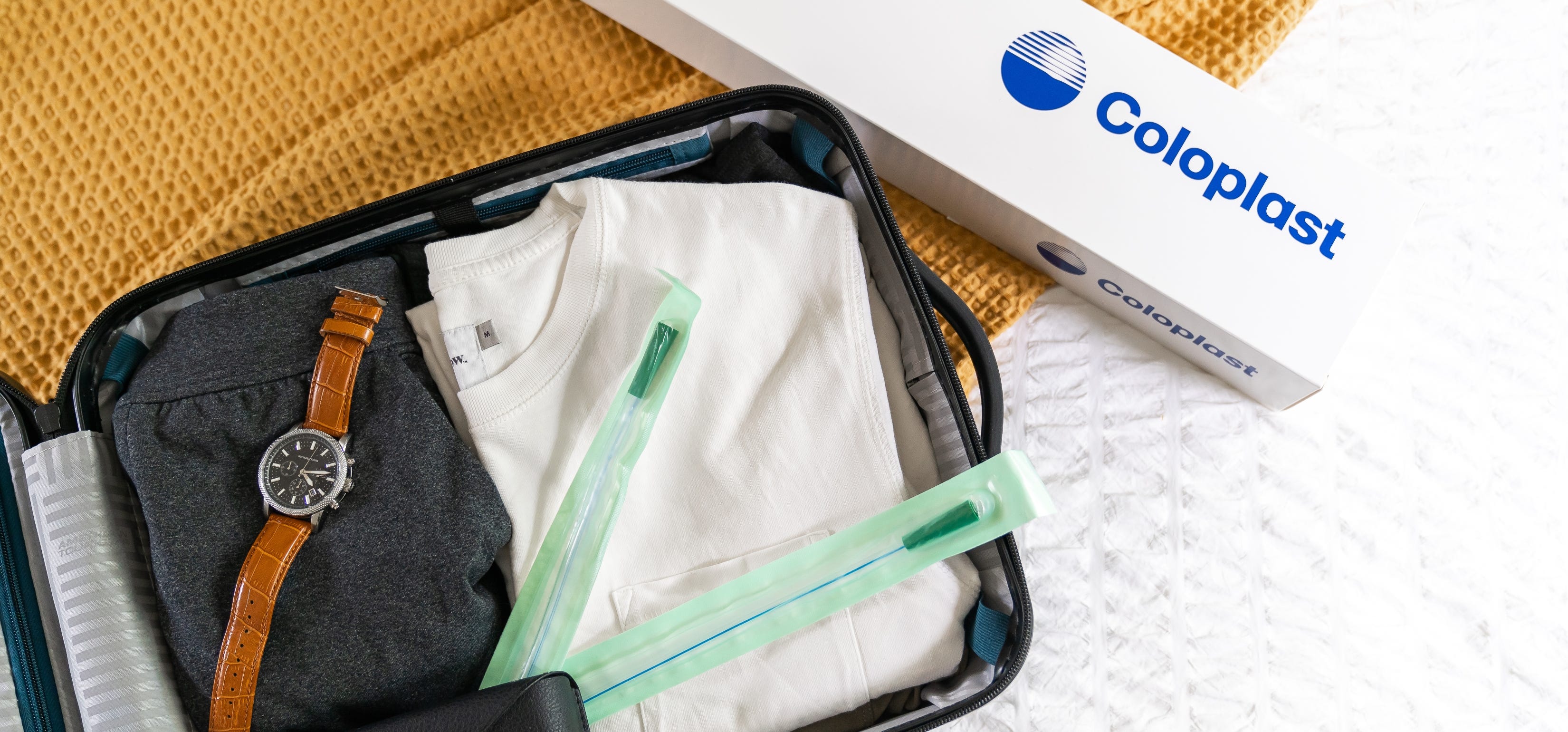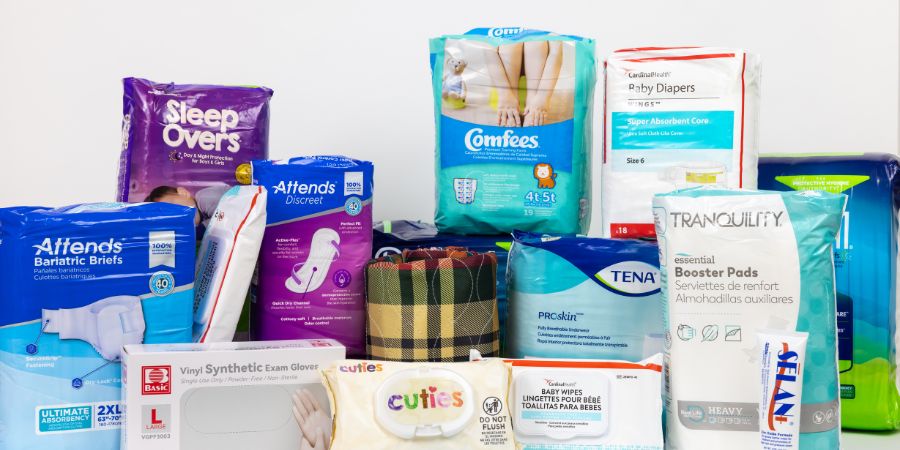Key Takeaways:
-
Catheter discomfort isn’t normal. If you experience pain or discomfort while using a catheter, you can explore options like pre-lubed catheters or different styles for a better fit.
-
Speaking to your healthcare provider about the correct type of catheter for you, practicing proper catheter hygiene to avoid urinary tract infections, properly draining your catheter, and using different catheter accessories can all help make catheter use more comfortable.
-
Aeroflow Urology can help you save on catheters and ship them discreetly to your door each month.
Some people associate catheters with pain. However, self-catheterization can and should be a comfortable solution for emptying your bladder.
If you’re experiencing discomfort when inserting your urinary catheter, there are a few easy tips that can help reduce discomfort.
How Do I Wear a Catheter Comfortably?
Using a catheter should not be painful or uncomfortable for either men or women. However, there’s a chance you may experience discomfort when using a catheter, especially if you’re new to self-catheterization.
Experiencing pain or discomfort is not normal, and there are a few different tricks to use to ensure you can wear your catheter comfortably.
1. Choosing the Right Type of Catheter
If you’re experiencing catheter pain or discomfort, the first step to take is to speak with your healthcare provider to ensure you’re using the correct type of catheter for your unique needs and anatomy.
Catheters come in various styles, all with unique features that suit some better. While your provider will most likely recommend and prescribe the right urinary catheter for you at your appointment, we’ll break down each type and who they’re best suited for.
Intermittent Catheters
Also called short-term catheters, intermittent catheters are used for self-catheterization at home daily, allowing you to insert and remove the catheter as needed to empty your bladder. Because these catheters are single-use, they may reduce the risk of developing urinary tract infections (UTIs) or catheter-related urinary tract infections (CAUTIs).
Because intermittent catheters don’t need to be worn continuously and don’t require a collection bag, they’re considered to be a more comfortable option for users. Intermittent catheters vary in length and size to fit the male, female, and pediatric anatomies, which provides extra comfort and ease of use.
If you’ve been prescribed an intermittent catheter by your healthcare provider and are a first-time user, you might be feeling hesitant to insert it. Get insertion tips from our helpful Catheter Guide to make your transition into using intermittent catheters go smoothly.
Indwelling Catheters
Indwelling catheters, also called Foley catheters, are inserted by your healthcare provider in the office and are designed to stay in your body for prolonged periods. Unlike intermittent catheters, Foley catheters are connected to a drainage bag to collect urine. Indwelling catheters are not genital-specific.
To prevent these catheters from slipping out of the body, they have small balloons attached to their ends, which deflate when it’s time for easy removal. Indwelling catheter change frequency will depend on your individual medical needs and will be removed or changed by your provider in the office.
Some people prefer Foley catheters because they allow for an active lifestyle without the need to self-catheterize.
External Catheters
External catheters are also referred to as condom catheters. These non-invasive catheters are structured like a condom, wrapping around the genitals to collect urine in urine bags. Collection bags for external catheters typically attach to your inner thigh with velcro leg straps.
Condom catheters are designed differently for males and females and eliminate the need for self-catheterization.
Check your coverage for 100% free incontinence products now!
Check your coverage for 100% free incontinence products now!
2. Avoiding Catheter-Associated Urinary Tract Infections
If bacteria or fungi enter your urethra and urinary tract through your catheter, you may develop a CAUTI. These infections can be extremely uncomfortable, causing pain and other symptoms, such as:
- Cloudy urine.
- Blood in the urine.
- Urine leakage around your catheter.
- Pressure, pain, or discomfort in your lower back or stomach.
- Fever or chills.
- Fatigue
- Nausea or vomiting.
Maintaining proper catheter insertion hygiene is essential to avoid developing these types of infections. This may seem obvious, but you must ensure you wash your hands with soap and warm water before handling your catheter supplies.
Maintaining Intermittent & Condom Catheter Hygiene
- Thoroughly wash your hands with soap and warm water.
- Dry the insertion or placement area with a clean towel.
- Remove your catheter from its packaging and insert or set it in place (before touching anything else!).
- Wash your hands after insertion and dispose of your old catheter.
Maintaining Indwelling Catheter Hygiene
To maintain hygiene while using a Foley catheter, wash the skin around the entry point daily in the shower. Cleaning the catheter tubing daily is also recommended. You should also empty your drainage bag at least twice each day.
- Thoroughly wash your hands with soap and water.
- Remove the urine bag to empty it.
- Use an alcohol wipe to disinfect the end of the catheter and drainage bag.
- Most catheter bags have a drain, but if yours is detachable, reattach the end of the catheter and drainage bag, ensuring there are no kinks or twists in the tubing to prevent blockage.
- Wash your hands with soap and water.
3. Properly Draining Your Bladder
Infections and discomfort can occur if your urine flows back into your bladder or if your bladder doesn’t empty completely.
When using your intermittent catheter, it’s important to leave the drainage tube inserted until your flow of urine stops completely. Then, gently push on your lower abdomen, where your bladder is located, to ensure it’s empty.
With indwelling or condom catheters, it’s good practice to position your drainage bag below your bladder to ensure proper emptying. You may find a leg bag helpful when using these types of catheters. Ensure your collection bag is large enough to hold urine during more extended activities, such as sleeping or traveling, to avoid overflowing. Special night bags can be an excellent option for sleeping.
4. Using Different Catheter Accessories
There are a variety of catheter types and accessories to choose from. Remember, you don’t have to settle for discomfort! It might take a bit of trial and error, but it’s important to keep trying different parts and accessories until you find the type of catheter that is most comfortable for you.
Catheter Accessory Options
- Specific catheter tubes may feel too rough for your skin, so different tubes may provide more comfort.
- Pre-lubed catheters come with lube that’s already applied, making the insertion process more sanitary.
- Different catheter tips may make it easier to insert your catheter.
- Different catheter lengths can make insertion more comfortable.
5. Saving on Catheters With Insurance
Finding out which catheter products you prefer doesn’t have to be expensive! You may qualify to receive high-quality catheter care items at low cost each month through your insurance plan with Aeroflow Urology.
Submit your insurance information through our secure Eligibility Form to determine your coverage quickly and easily.
Once your healthcare provider has written the required prescription for your catheter, we’ll contact their office and obtain it on your behalf. You won’t need to complete any paperwork or deal with your insurance company— our Continence Care Specialists will handle everything for you! You can also request different catheter samples from us to determine which suits you best.
Once you’ve selected the low-cost catheter that fits you best, we’ll ship your items directly to your home in discreet packaging on a monthly basis for free.
Disclaimer
Information provided on the Aeroflow Urology blog is not intended as a substitute for medical advice or care from a healthcare professional. Aeroflow recommends consulting your healthcare provider if you are experiencing medical issues relating to incontinence.



